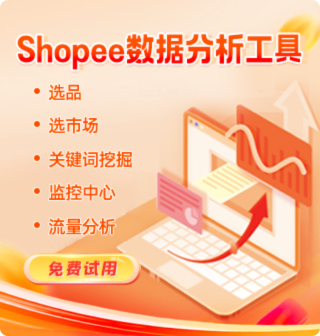-
用户104****0544
Understanding Shopee Data: Insights, Uses, and Strategies for Sellers
Shopee, as one of Southeast Asia’s largest e-commerce platforms, generates an immense volume of data daily. This data is a goldmine for understanding consumer behavior, market trends, and operational performance. For sellers and businesses leveraging Shopee, mastering the use of Shopee data is essential to gaining a competitive edge, optimizing sales, and improving customer engagement.
This article explores the types of data Shopee collects, how this data is used within the platform, and practical ways sellers can harness Shopee data to grow their business.
1. Types of Shopee Data
Shopee collects and processes various data types, which can be broadly categorized as follows:
User Data: Includes demographic information (age, gender, location), browsing behavior, purchase history, and payment preferences.
Product Data: Details about product listings, including titles, descriptions, prices, stock levels, and seller ratings.
Transaction Data: Records of orders placed, payment methods used, shipping details, and return/refund cases.
Marketing Data: Effectiveness of campaigns, voucher usage, click-through rates on ads, and participation in flash sales.
Logistics Data: Information on shipping times, courier performance, delivery success rates, and tracking updates.
Feedback and Review Data: User-generated ratings, comments, and Q&A related to products and sellers.
2. How Shopee Utilizes Data
Shopee’s platform uses data extensively to enhance user experience and operational efficiency:
Personalized Recommendations: By analyzing browsing and purchase history, Shopee’s algorithms suggest products tailored to individual users, boosting conversion rates.
Dynamic Search Ranking: Product search results are influenced by factors such as sales performance, relevance, and user interactions, which depend on data-driven scoring models.
Pricing Strategies: Shopee analyzes market demand and competitor pricing to recommend optimal pricing and discount strategies, including during flash sales.
Fraud Detection: Transaction and user behavior data help identify suspicious activity, reducing fraud and ensuring platform security.
Logistics Optimization: Data on shipping routes and delivery times guide improvements in courier selection and fulfillment processes.
Seller Performance Monitoring: Shopee tracks seller metrics such as order fulfillment rate, response time, and customer ratings to maintain marketplace quality.
3. Practical Uses of Shopee Data for Sellers
For sellers, data is a powerful tool to refine strategy and increase sales:
a) Sales Analytics
Using Shopee’s Seller Center, sellers can access detailed reports on sales volume, revenue, best-selling products, peak sales hours, and customer demographics. This empowers sellers to adjust inventory, manage cash flow, and target marketing efforts more effectively.
b) Customer Behavior Insights
By studying which products attract more views or add-to-cart actions but do not convert, sellers can identify issues such as pricing mismatch, poor product descriptions, or inadequate images.
c) Competitor Benchmarking
Sellers can monitor competitor pricing and promotions in real-time, allowing them to adjust their own pricing or bundle offers to stay competitive.
d) Marketing Optimization
Analyzing voucher redemption rates, ad click-through ratios, and campaign ROI helps sellers plan more effective promotions and understand which marketing channels deliver the best results.
e) Inventory Management
Data on sales trends helps sellers forecast demand and avoid stockouts or overstocking, optimizing working capital and customer satisfaction.
4. Advanced Data-Driven Strategies for Shopee Sellers
A/B Testing Product Listings: Sellers can experiment with different product titles, images, or descriptions and analyze traffic and conversion data to find the most effective presentation.
Time-Based Promotions: Using historical sales data, sellers can identify peak shopping times and align promotions accordingly to maximize impact.
Customer Segmentation: Grouping customers based on purchase patterns or demographics enables sellers to tailor marketing messages and offers, increasing relevance.
Cross-Selling and Upselling: Analyzing purchase combinations can help sellers create effective product bundles or recommend complementary products.
Utilizing Shopee API: For larger sellers, integrating Shopee’s APIs allows automated data extraction for deeper analysis using external business intelligence tools.
5. Privacy and Compliance Considerations
When handling Shopee data, especially customer information, sellers must be mindful of privacy laws such as the Personal Data Protection Act (PDPA) in Southeast Asia. Shopee itself complies with stringent data protection standards to safeguard user data, and sellers should likewise adopt responsible data practices, including:
Collecting only necessary customer data
Ensuring secure storage and processing of data
Using data only for legitimate business purposes
Being transparent with customers about data usage
6. The Future of Shopee Data Analytics
Shopee continues to invest in artificial intelligence and big data technologies to enhance predictive analytics, real-time personalization, and automated decision-making. Features like voice search, live stream shopping analytics, and enhanced seller dashboards are expected to become more data-driven, providing richer insights and more actionable recommendations.
Conclusion
Shopee data represents a critical resource for sellers aiming to thrive in a competitive e-commerce environment. By understanding the types of data available and learning to interpret and apply these insights, sellers can optimize pricing, marketing, inventory, and customer service.
In an era where data-driven decision-making defines success, mastering Shopee data analytics is not just an advantage but a necessity for sustainable growth on this dynamic platform.

